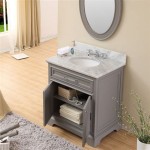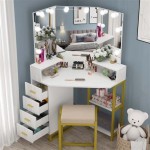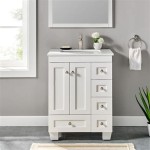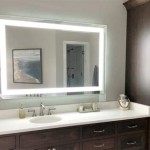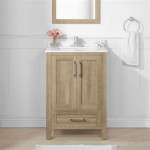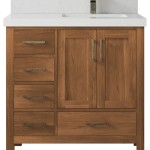Floating Bathroom Sink and Vanity: A Comprehensive Overview
Floating bathroom sinks and vanities, also referred to as wall-mounted sinks and vanities, have emerged as a prominent design choice in modern bathrooms. Their appeal stems from their space-saving qualities, contemporary aesthetics, and the illusion of a larger, more open bathroom environment. This article provides a detailed examination of floating bathroom sinks and vanities, covering their advantages, installation considerations, design variations, and maintenance aspects.
Space Optimization and Accessibility
One of the primary advantages of floating bathroom sinks and vanities lies in their ability to optimize bathroom space. By eliminating the traditional floor-standing pedestal or cabinet base, these fixtures create open space beneath the sink. This open area can be particularly beneficial in smaller bathrooms, where every square inch counts. The visual effect of the open space contributes to a less cluttered and more spacious feel.
Furthermore, the open space beneath a floating sink or vanity can enhance accessibility. Individuals with mobility issues, such as wheelchair users, can more easily access the sink without encountering obstruction from a floor-mounted cabinet. The height of the sink can also be adjusted during installation to accommodate specific needs, further improving accessibility.
The absence of a solid base also allows for easier cleaning. Moping or cleaning the bathroom floor beneath a floating sink is less cumbersome compared to navigating around a traditional vanity. This benefit contributes to improved hygiene and simplified maintenance.
Aesthetic Versatility and Design Considerations
Floating bathroom sinks and vanities offer a wide range of aesthetic possibilities, making them adaptable to various bathroom styles. They seamlessly integrate into minimalist, contemporary, and even transitional designs. The clean lines and uncluttered appearance of floating fixtures complement modern aesthetics, while the availability of different materials and finishes allows them to harmonize with other design elements.
The design of a floating bathroom sink or vanity can be tailored to specific preferences. Sinks can come in various shapes, including rectangular, oval, and circular. Vanity tops can be constructed from materials such as marble, granite, quartz, glass, or wood, offering a diverse range of textures and visual appeal. The choice of hardware, such as faucets and drawer pulls, further contributes to the overall design aesthetic.
Lighting can be strategically incorporated around a floating vanity to enhance its visual impact. Under-cabinet lighting can illuminate the floor space, creating a soft and ambient glow. This lighting not only enhances the aesthetics but also improves visibility at night. Consider adding a mirror cabinet above the sink to add more storage place.
The selection of a suitable wall surface is crucial for the successful installation of a floating sink or vanity. The wall must be structurally sound and capable of supporting the weight of the fixture, water, and any items stored within the vanity. Reinforcements may be necessary, particularly in older homes or when installing heavier fixtures. Consider professional wall installation if needed.
Installation and Structural Requirements
The installation of a floating bathroom sink or vanity necessitates careful planning and attention to structural requirements. Unlike floor-mounted fixtures, floating vanities rely entirely on the wall for support. Therefore, the wall must be sufficiently strong and appropriately reinforced to handle the load.
Typically, floating vanities are mounted to wall studs using heavy-duty brackets or mounting hardware. The spacing of the studs and the type of wall material (e.g., drywall, plaster, concrete) influence the choice of mounting hardware. In some cases, additional framing or bracing may be required to provide adequate support.
Plumbing connections for the sink also need to be carefully planned and executed. The water supply lines and drainpipe must be routed through the wall and connected to the sink without compromising the structural integrity of the wall. Concealing the plumbing within the wall creates a clean and uncluttered appearance, which is a hallmark of floating vanities.
Professional installation by a qualified plumber and contractor is highly recommended, especially for complex installations or when dealing with structural modifications. Incorrect installation can lead to instability, water leaks, and potential damage to the wall and surrounding areas.
Before installation, accurately measure the space and mark the desired height of the vanity. Ensure that the height is comfortable for all users and complies with any applicable building codes or accessibility regulations. Measure twice and cut once is a good rule of thumb.
Material Selection and Durability
The materials used in the construction of a floating bathroom sink and vanity significantly influence its durability, aesthetics, and maintenance requirements. The sink basin can be made from various materials, including porcelain, ceramic, stone, glass, or stainless steel. Each material offers unique characteristics in terms of appearance, durability, and ease of cleaning.
Vanity tops are commonly constructed from materials such as marble, granite, quartz, solid surface, or wood. Natural stone, such as marble and granite, offers a luxurious and elegant look but requires regular sealing to prevent staining and water damage. Quartz is a durable and low-maintenance alternative that mimics the appearance of natural stone. Solid surface materials are non-porous and resistant to scratches and stains, making them a practical choice for high-traffic bathrooms. Wood vanities can add warmth and character to the bathroom but require proper sealing and protection from moisture.
The choice of cabinet material influences the vanity's resistance to moisture and humidity. Solid wood, plywood with water-resistant veneers, or PVC are commonly used for vanity cabinets. Moisture-resistant materials are particularly important in bathrooms, where humidity levels can be high. Additionally, the quality of the hardware, such as hinges and drawer slides, contributes to the overall durability and functionality of the vanity.
Consider the long-term maintenance requirements of each material before making a selection. Some materials may require more frequent cleaning or sealing than others. Choose materials that are easy to clean and resistant to stains, scratches, and water damage.
Plumbing Considerations and Hidden Plumbing
The plumbing associated with a floating bathroom sink and vanity presents unique considerations compared to traditional installations. Because the vanity is mounted to the wall, the plumbing must be carefully routed and concealed to maintain a clean and uncluttered appearance. Hiding the plumbing lines is a key element of the floating vanity aesthetic.
Wall-mounted faucets are often used with floating sinks to further enhance the minimalist look. These faucets are installed directly into the wall, eliminating the need for a countertop-mounted faucet. The plumbing for a wall-mounted faucet is concealed within the wall, creating a seamless and elegant appearance.
The drainpipe for the sink must also be carefully routed and concealed. A P-trap is typically installed to prevent sewer gases from entering the bathroom. The P-trap and drainpipe can be hidden within the wall cavity or concealed behind a decorative panel. Some floating vanities incorporate a false bottom or panel to conceal the plumbing while providing access for maintenance.
Proper planning and coordination between the plumber and contractor are essential to ensure that the plumbing is correctly installed and concealed. The plumber must work closely with the contractor to ensure that the wall is properly framed and reinforced to accommodate the plumbing lines. Access panels should be strategically placed to allow for future maintenance and repairs.
Storage Solutions and Organization
While floating bathroom sinks and vanities prioritize space optimization, they can also incorporate storage solutions to help keep the bathroom organized. The design of the vanity can be customized to include drawers, shelves, or open storage compartments. The choice of storage options depends on the available space and the user's needs.
Drawers are a common storage solution for organizing toiletries, cosmetics, and other small items. Drawers can be configured with dividers or organizers to maximize storage space and keep items neatly arranged. Soft-close drawer slides are a desirable feature that prevents slamming and reduces wear and tear on the vanity.
Shelves can be used to store larger items, such as towels, toiletries, or decorative accessories. Open shelves can create a more airy and open feel, while closed shelves provide a more concealed storage option. The height and depth of the shelves can be customized to accommodate specific items.
Consider incorporating a combination of drawers, shelves, and open storage compartments to meet your specific storage needs. Maximize vertical space by adding a tall cabinet or shelving unit above the vanity.
Organizational accessories, such as drawer dividers, baskets, and containers, can further enhance the functionality of the vanity. These accessories help to keep items organized and prevent clutter.
Remember to balance storage needs with the overall aesthetic of the bathroom. Avoid overcrowding the vanity with too many items, as this can detract from the clean and minimalist look.
Cleaning and Maintenance
Maintaining a floating bathroom sink and vanity involves regular cleaning to prevent the buildup of soap scum, water spots, and grime. The frequency of cleaning depends on the type of materials used and the level of usage.
Use a mild, non-abrasive cleaner to clean the sink basin and vanity top. Avoid using harsh chemicals or abrasive cleaners, as these can damage the surface. Rinse thoroughly with water and dry with a soft cloth.
Clean the faucet and hardware with a soft cloth and a mild cleaner. Avoid using abrasive cleaners, as these can scratch the finish. Periodically check the faucet for leaks and repair any leaks promptly to prevent water damage.
Wipe down the vanity cabinet with a damp cloth to remove dust and grime. Use a wood cleaner or polish to maintain the finish of wooden vanities. Avoid exposing wooden vanities to excessive moisture, as this can cause warping or damage.
Regularly inspect the plumbing connections for leaks and repair any leaks promptly. Check the P-trap for clogs and clean it as needed to prevent drain backups.
Clean the area beneath the floating vanity regularly to prevent the buildup of dust and debris. Use a vacuum cleaner or mop to clean the floor beneath the vanity.
By following these cleaning and maintenance tips, you can keep your floating bathroom sink and vanity looking its best for years to come.

Custom Made Bathroom Wood Floating Vanity Shelf Sink Live Natural Edge Rustic Solid Wall Mounted New Home Gift Etsy

23 6 In W X 18 9 D H Floating Bath Vanity White Oak With Sintered Stone Top And Ceramic Sink Al0016 24 The Home

Mid Century Floating Single Bathroom Vanity 24 West Elm

36 Floating Bathroom Vanity With Single Sink Wall Mounted Cabinet Homary

Homary 35 Modern Floating Bathroom Vanity Set With Single Sink White And Black Wal Com

30 Floating Wall Mount Bathroom Vanity Cabinet W Basin Sink Adjustable Shelf

Handcrafted Bathroom Rustic Floating Vanity With Reclaimed Wood Custom Natural Sink Live Edge Shelf Gift For Her Etsy

31 Floating Bathroom Vanity With Sink In Black White Homary

36 Black Floating Bathroom Vanity With Vessel Sink Mrs

60 Floating Wood Vanity Offset Single Sink What We Make
